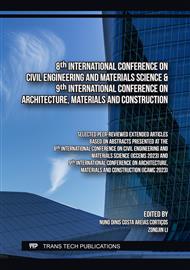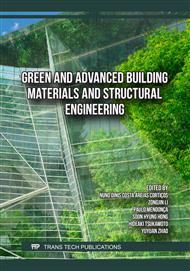p.87
p.95
p.101
p.113
p.119
p.125
p.133
p.143
p.151
Effect of Grain Size Distribution on Shear Strength Characteristic of Random Fill Material at Keureuto Dam, Indonesia
Abstract:
Earth-fill dams are commonly constructed by composing different geomaterials to optimally utilize local natural resources. In Indonesia, random fill materials are frequently used as a major composition in dam construction. The term random fill material originated from its broad range of grain size. Grain size distribution influences shear strength characteristics of geomaterials. There are 2 shear strength equations to model the behavior of fill material, i.e., linear Mohr-Coulomb and non-linear power curve. Two series of large scale in situ direct shear tests were performed at Keureuto Dam, Indonesia. Sieve analysis tests were performed accordingly. The random fill material was composed of cobbles, gravel, and less than 25% of sand. The stress-displacement characteristics of random fill material indicated that plastic deformation occurred at shear strain of 1% to 4%. The shear failure was reached in shear displacements of 60 – 90 mm, equivalent to shear strain of 8% – 12 %. Stress-strain relationships showed a dilative behavior indicating the random fill was in a relatively dense form. The dilatancy tends to decrease as the normal stress increases. The linear Mohr-Coulomb failure criteria and non-linear power curve equation are suggested to characterize the shear strength of the random fill material. To obtain a realistic value of the non-cohesive strength parameter of granular material, the Mohr-Coulomb approach should be intercepted at zero. A relationship between secant friction angles for different normal stresses is presented. This angle tends to decrease at higher normal stresses.
Info:
Periodical:
Pages:
151-156
Citation:
Online since:
December 2023
Price:
Сopyright:
© 2023 Trans Tech Publications Ltd. All Rights Reserved
Share:
Citation:



